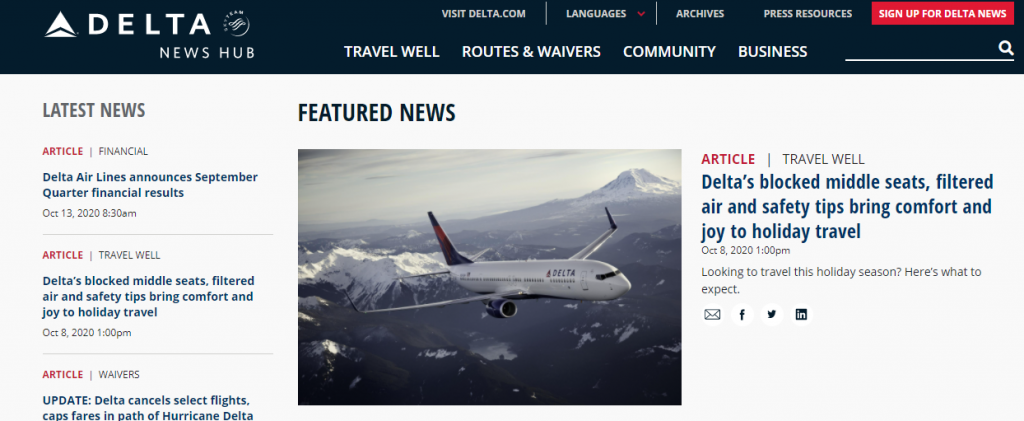My aha(!) moment came thanks to a small broadcast news site somewhere in the Dakotas.
I had conceived the Delta News Hub as a way to tell the story of Delta Air Lines directly to journalists and consumers – to provide a glimpse of what it took to operate one of the world’s largest carriers. We made it clear that all the content on the hub was free and easy to download. But seriously, what self-respecting journalism outfit would actually use a story from the News Hub. Written by us?

And then one did. And another. And then the New York Times took a video from the News Hub and embedded it in a story. I knew we were on to something.
Later, at the Knights of Columbus, a two-million-member charitable organization that operates a $25 billion non-profit insurance company, we expanded on this idea by successfully offering to create feature content directly for certain news sites. It was a big reminder that newsrooms — big and small, traditional and niche — are starving and companies and organizations that have something to say and know how to say it well can use traditional media in different ways to get their stories out.

I was a journalist when ads were spilling out of newspapers; the Sunday paper weighed pounds with an “s” and every newsroom desk was full. Or in other words, just a decade or so ago. These days, the newsroom drain has become a tidal wave, and it’s not ebbing anytime soon. That puts a premium on telling your own story and getting it distributed.
Personally, I’m not a fan of the phrase “brand journalism.” What we do is not journalism, and to say otherwise just irritates journalists. A more appropriate name is “brand storytelling.” But here’s the rub. To get taken seriously by readers and get used by a media outlet, it needs to read like journalism. That starts with three rules to follow.
- Start right
This is not a news release. It’s a story and needs to start like one with a conversational and attention-grabbing lead paragraph that propels the reader forward. If the reader is bored by the first sentence, you’ve wasted his/her time – and yours.
- Add context
In newsrooms, we called them “nut graphs.” It’s the sentence or two after the lead and before the first quote in which you explain why the story matters and connects the dots to a broader message. It often can be as simple as writing, “This is one of many ways that (your company) serves customers’ needs…”
- Write snappy quotes
This seems self-evident, but too many quotes I see in branded stories miss the mark for three reasons. First, they sound like somebody wrote the words instead of said them. Be conversational. Second, they don’t add much that’s unique or dynamic and could just as well be paraphrased. Third, they’re too long. Someone once decided that the proper use of a quote was to write a sentence in quote marks, have the attribution, and then follow it up with another quote. I’d rather read one punchy quote that I’ll remember – and so will your readers.


